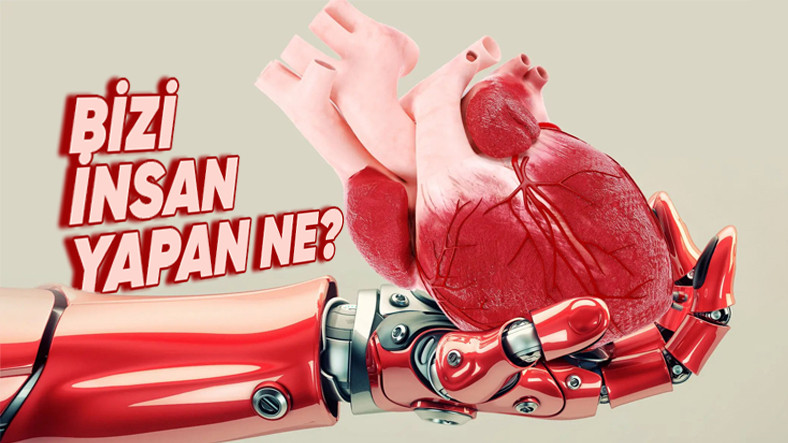Agree, artificial organs and bionic limbsHow will it change our lives?
When you start to change ethics It is also useful to mention the methods that still need to be addressed.
A new era in healthcare has begun with artificial organs.

Although organ transplantation saves the lives of many patients, this is also the case process for finding donors It can be quite long and complex. Millions of people around the world die while waiting for an organ transplant.
Here it is; made from inanimate polymers like plastic and metal mechanical organsbiomechanical organs, including both living materials such as cells and non-living materials, bionic and biodegradable organs made of living cells and biodegradable polymers bioartificial organs Activated.
Its implementation has already begun.

For example, if we look at 2011, how many years have passed in Sweden? world’s first synthetic organ transplant was performed. Scientists in London have created an artificial windpipe covered with stem cells from patients. They did not need donors to do this.
Moreover, as 3D printing technology develops day by day, scientists are developing from heart to kidney Some organs are personalized, and this effectively means that waiting times for organ transplants are significantly reduced.
There are also unknowns.

The biggest problem of the produced artificial organ is the damage caused by the tissues in the body. force exerted it turns out. Whether the artificial organ will have sufficient mechanical stability to withstand this force is a point where research and development continues.
Still what we are looking at of artificial organ surgeries Many patients can then continue their lives where they left off.
Bionic limbs overcome obstacles and create freedom of movement. From where to where…

Another groundbreaking revolution is that bionic limbs is happening. These limbs replace lost or dysfunctional limbs, giving users back the freedom of movement they have lost.
After wooden legs, hook hands and metal arms, modern bionic arms and legs, high-tech sensors and thanks to the AI-powered motion control, it performs very close to natural limbs.
Freedom comes from connecting with the nervous system.

nerves, muscles, cerebral cortex Thanks to concepts like synapses that allow us to make our movements, a smooth order begins with bionic limbs.
Research has been done on the area where prosthetic users can recognize and control their hands, and it has been found that the neural connections are quite strong. In fact the brain accepts the prosthesis and we can clearly say that it works accordingly.
Of course, most of this is replaced by missing limbs. Add another finger and lift your hand 6 fingers Also, the studies that need to be done show that the brain has difficulty adapting, but it is not known whether this will be overcome after years. You see, we have all twelve fingers.
What are these bionic limbs made of?

Bionic and wearable robotic limbs One of its advantages is that many details are considered to enable people to potentially improve themselves and make a positive contribution to their productivity.
Living implant coatings are being developed that will work in conjunction with neural stem cells. The benefits of synthetic and natural polymers are also being evaluated. While synthetic polymers are durable and predictable with natural polymers Although more difficult to study, these more closely resemble the structure that cells are accustomed to.

There’s more. Some of these prostheses are made based on the skin color of the person, moles, frecklesIt is made according to many details such as nails, tattoos, veins and fingerprints. This Prosthetic limb Covering creations can contain PVC or a range of silicone. It is made of flexible leather that fits the body or as a leather cover.
What about accessibility and equality?

Despite the rapid advances in artificial organs and bionic limb technologies the costs are still very high. It seems that time will have to pass and the technology will have to evolve a bit more so that it is not limited only to those with good economic circumstances.
States and health care systems will also make these technologies more accessible. develop policy It is necessary. For social equality it is of great importance that everyone can benefit from these innovations.
The development of artificial organs and bionic limbs raises several ethical questions.

Tests performed on humans, privacy of personal data Issues such as technology and misuse of technology are among the issues that need to be addressed carefully. Considering that it will penetrate from our brains to all our cells, ethical rules need to be strictly implemented to develop technology in a way that benefits people without harming them.
It will definitely make a big difference in everyday life.

It is certain that one day when it becomes accessible or completely safe, people’s quality of life will increase significantly. Users will thus become more independent and opportunity to lead an active life will find it.
We can’t help but think: is it our body, our brain, our emotions or something intangible that makes us human? With these advances circle between man and machine As we become narrower, we don’t know how to answer the question we ask.
We welcome your thoughts on this topic in the comments.
Sources: Science Robotics, Dani Clode Design, European Commission Directorate-General for Research and Innovation, Research Features, Australian Academy of Science, World Economic Forum, Sage Journals
You can explore our future with this content:
Follow Webtekno on X and don’t miss the news























